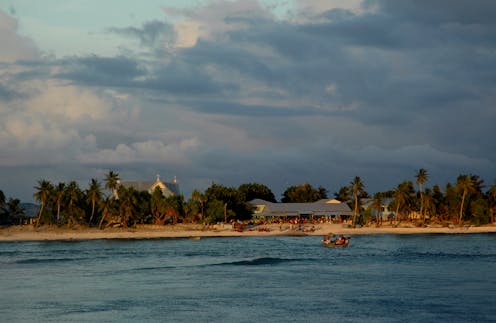With more Tokelauan speakers in New Zealand than in Tokelau, it remains a unique but endangered language
- Written by John Middleton, Doctoral Candidate, University of Auckland

If you didn’t know Tokelau Language Week[1] begins this weekend, you can probably be forgiven. Spoken by fewer than 5,000 people worldwide, Tokelauan has been designated “severely endangered” by UNESCO, its second-most at-risk category. You simply don’t hear it spoken much – or spoken about.
The statistics tell us why. Since the mid-1960s, migration from Tokelau has meant more 3,000 Tokelauan speakers now live in New Zealand, with just 1,500 still in their homeland. With transmission between generations declining, Tokelauan really is in danger.
Compared to the estimated 1.8 billion English speakers in the world, Tokelauan is literally and figuratively a speck in the ocean, with native speakers now spread around the Pacific in Samoa, Hawaii, Australia and New Zealand.
But while many Tokelauans may not have been born in Tokelau, their culture and language continue to play an important part in their lives. Keeping the language in the public consciousness is crucial to it thriving.
Survival strategies
Tokelau itself is comprised of three tiny atolls – Atafu, Nukunonu and Fakaofo – with a combined land area of just 12 square kilometres, a day’s boat ride north-west from Samoa.
To give a sense of scale, the habitable space on Fakaofo is roughly the size of Auckland’s Eden Park. Being so small and near sea level means not only the language is at risk – climate change is a grave threat, too.
Read more: What happens when a country drowns?[2]
A strong communal culture exists, although many younger people emigrate for education or employment. Fishing the surrounding ocean is vital to people’s livelihoods, as most other supplies have to be shipped in from Samoa.
Now part of the “Realm of New Zealand[3]”, the atolls were first populated over 500 years ago by people originally from Samoa, as evidenced by the similarities between the two languages.
Tokelauan falls under the Samoic-outlier branch of the Polynesian languages, along with Samoan (which it borrows words from) and Tuvaluan. Other related languages include Pukapuka from the Northern Cook Islands, and East Uvea from Wallis Island.


















